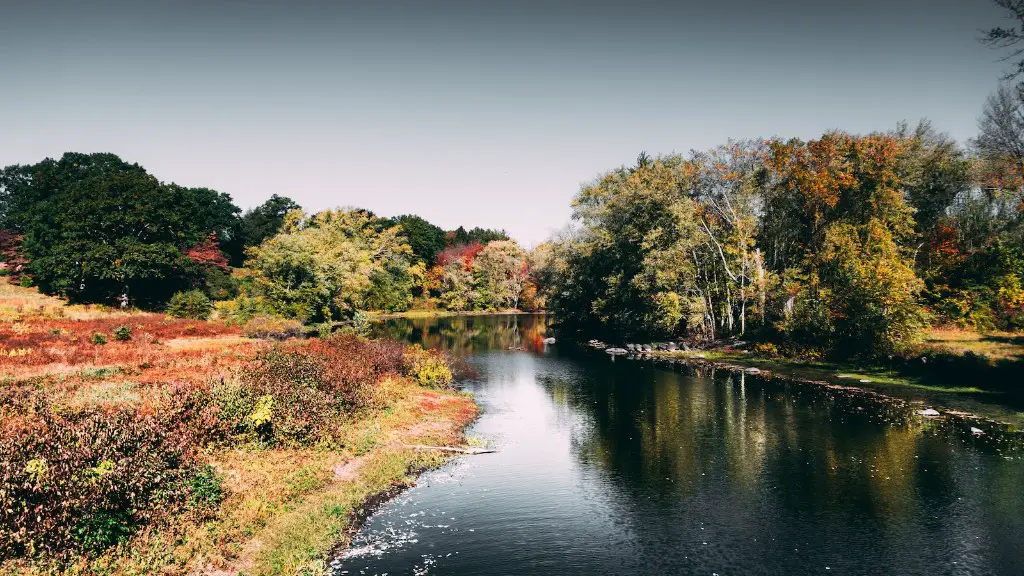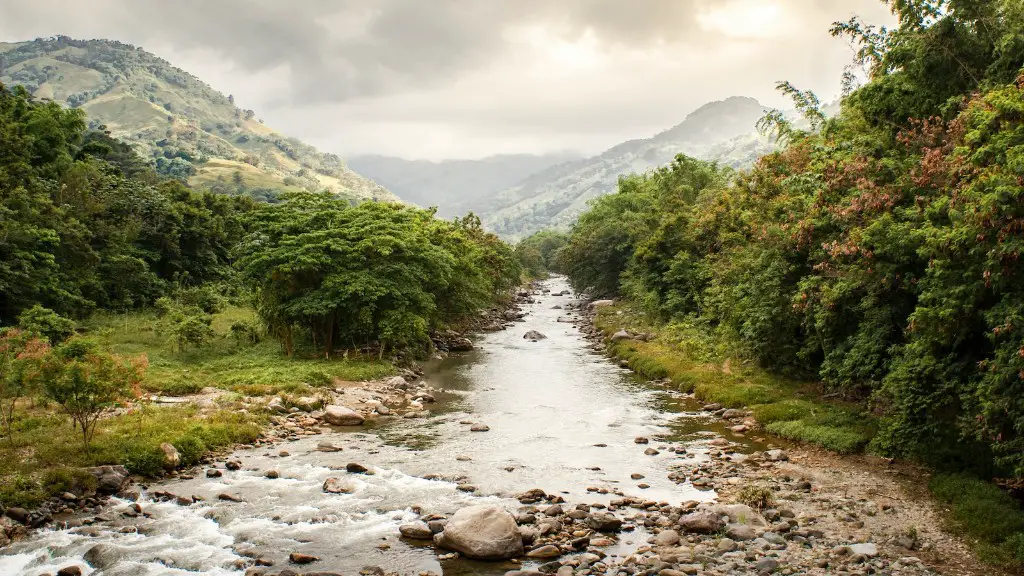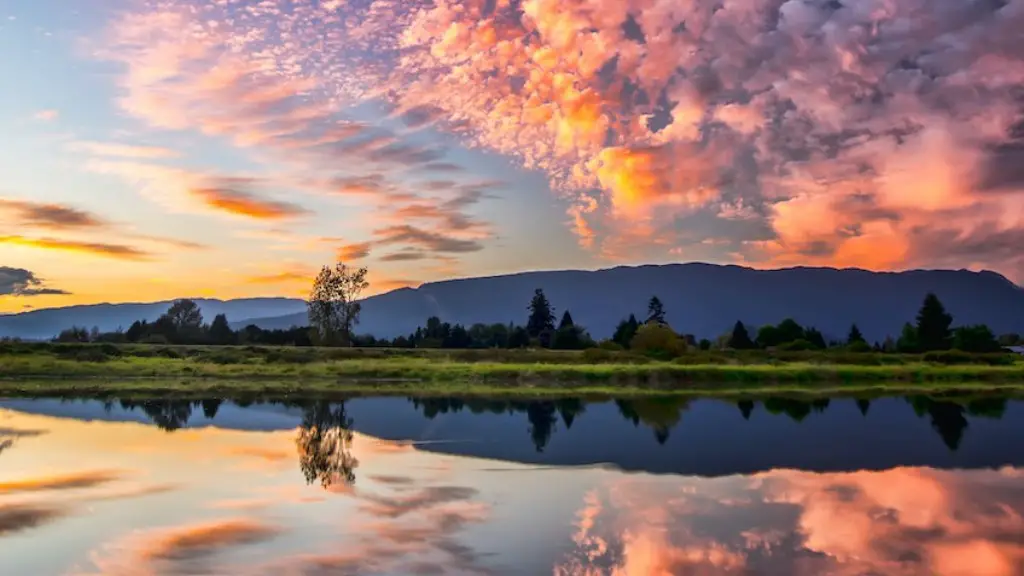The Yangtze River is the longest river in Asia and the third longest river in the world. It stretches more than 3,900 miles from its source in the Tibetan Plateau to the East China Sea. The river has served as a vital source of transportation and sustenance as well as a major economic artery for numerous Chinese cities. However, the Yangtze River is also dangerous and can be deadly.
The most obvious hazard associated with the Yangtze River is the risk of drowning. With its strong currents, unpredictable eddies and powerful rapids, the river poses a significant threat for even experienced swimmers. People who lack the necessary experience and skill can easily be swept away by the powerful flows and rapids of the river. The Yangtze River is also home to diverse wildlife and carnivorous animals, making it even more dangerous.
The Yangtze River also presents environmental challenges. Along with the pollution from industrial waste, agricultural runoff and sewage, the river is also at risk from changes in the climate and fluctuations in temperature. These climate changes can have drastic effects on the delicate marine ecosystems along the river. The excessive heat and dry weather also accelerate the melting of glaciers and ice sheets, leading to floods and even drought. This can cause severe damage to the environment, as well as increase the risk of contamination in the waters.
According to Li Yan, a senior official from the Ministry of Environmental Protection, the pollution and environmental degradation along the Yangtze River have reached an alarming level and must be addressed quickly. She states that the central government intends to take further measures to protect and restore the river. These measures include tighter regulations and monitoring, improved water quality monitoring, as well as increased investment in clean energy solutions.
The government has also proposed a range of projects such as pollution control and water conservation projects along the Yangtze River. These projects involve a number of stakeholders, including regional and local governments, NGOs, scientific and educational institutes, and local communities. These parties will work together to reduce pollution and improve water quality by increasing the efficiency of agricultural production, promoting sustainable energy solutions and enhancing overall water management policies.
While the government is taking these steps to protect the Yangtze River, it is also essential for individuals to take steps to prevent and mitigate the dangers posed by the river. The most important action individuals can take is to be aware of the danger and take precautionary measures while in or near the Yangtze. It is also important to avoid swimming or any other physical activities in the river, as the currents can be strong and unpredictable.
The Effect of Deforestation
Deforestation is one of the greatest threats to the Yangtze River. Trees and other vegetation play a vital role in protecting the waterway. Deforestation depletes its natural buffers, leaving the river vulnerable to flooding, siltation and other environmental damages. It also leads to higher levels of sediments and nutrients, contributing to the deterioration of aquatic life.
In recent decades, deforestation has become one of the most pressing issues in the Yangtze basin. An estimated 19,441 square kilometers have been deforested in the area since the 1950s. In 2016, the Chinese government declared a plan to cut deforestation in the Yangtze River valley by 40% to protect the waterway and improve the quality of its rivers.
Further, the government has imposed strict regulations related to forest conservation. These include decrees prohibiting cutting of protected species and the setting of replanting and afforestation targets. In addition, the government also created protected areas along the riverbanks to protect plant and animal species. Together, these measures are taking a positive step towards the restoration of the Yangtze River.
However, there is still much to be done to protect the river from the effects of deforestation. It is essential for individuals to take the initiative to reduce their own carbon footprint and to support forest conservation policies and initiatives. Additionally, the government should continue to increase investment in clean energy solutions, sustainable agricultural practices and other measures to protect this vital waterway.
Another threat to the Yangtze River is the constriction of navigation along the river due to sediment build-up. Sediment is carried downstream by the river, causing the river bed to become clogged and narrowing its width. This affects the flow of the river, reducing its navigational capacity and making it more difficult and dangerous for ships to pass.
Regular dredging operations and the construction of embankments and dams along the Yangtze River can help to reduce sediment build-up and improve navigability. The Chinese government has invested heavily in dredging projects, aiming to boost trade and transportation along the Yangtze River. However, it is essential for the government to continue these investments, as well as seek out more sustainable solutions for improving navigability, if it wishes to protect the river and its communities.
Despite the construction of dams and embankments, sediment still accumulates along the riverbed and this can have disastrous consequences on the local ecosystems and the communities living along the waterway. Sediments block sunlight from reaching the water, leading to the decline of fish and other aquatic species, as well as eutrophication. This can endanger the livelihoods of local communities and cause devastating environmental damage.
The importance of mitigating the accumulation of sediment should not be underestimated. The government must ensure that all dredging operations are preceded by a thorough environmental evaluation and that all measures are taken to reduce the risk of further damage to the ecosystem. Additionally, work should be done to increase public awareness and education about the importance of protecting the Yangtze River.
Social and Political Impacts
The issues associated with the Yangtze River also have social and political implications. The river is home to a number of communities and native peoples, many of which are reliant on the river and its resources for their livelihoods. But the rapid industrialization and urbanization in the Yangtze basin, as well as the increasing effects of climate change, have caused severe disruptions to their lives.
Factories, power plants and other industrial activities have been built in riverside areas, leading to severe air and water pollution, as well as land and resource degradation. Pollution is also resulting in the displacement of communities, particularly those living in rural and coastal areas. Additionally, social and economic disparities between these communities are bound to increase as a result of the economic development along the river.
Political decision-making and implementation of policies related to the Yangtze River can have a significant impact on the people and communities living in the area. It is essential for the government to take into account the voices and perspectives of these communities in order to ensure equitable and sustainable development of the river basin.
The government must strive to include the rural and coastal communities in the decision-making process and consider their needs, including access to clean water, decent housing and other basic necessities. It is also important to ensure that these communities have access to the same services and amenities provided to the urban populations. Further, it is important to ensure that any development or infrastructure projects in the area do not lead to additional environmental damage or displacement.
Climate Change Adaptation
Climate change has emerged as a major threat to the Yangtze River. Increased sea levels, extreme weather events and fluctuations in temperature can lead to severe flooding and drought, putting communities in the Yangtze basin at risk. In addition, climate change is also putting more pressure on already stressed ecosystems and impacting the water quality of the river.
The Chinese government has undertaken numerous projects to combat climate change, such as energy efficiency programs, renewable energy initiatives and carbon emission reduction schemes. These measures are essential for mitigating the impacts of climate change on the Yangtze River. Nevertheless, further measures are needed to ensure the adaptation of the river basin in the face of climate change.
One such measure is to focus on coastal zone management, which involves regulating the use of coastal lands and implementation of protective measures against storms and flooding. In addition, reforestation and afforestation projects should be undertaken along the riverbanks to protect the river from the impacts of climate change. Other measures such as green infrastructure, watershed management and rainwater harvesting should also be considered to help reduce the risks associated with climate change.
Furthermore, climate change adaptation in the Yangtze basin requires international collaboration and support. China is one of the largest contributors to global emissions and has a responsibility to take measures to reduce its footprint and protect the ecosystems of the Yangtze River. International organizations and NGOs must also work together to support China’s efforts to protect the river and the communities living in its basin.
Sustainable Development
In order to ensure a lasting solution to the pressing issues related to the Yangtze River, sustainable development of the river basin must become a priority. This involves developing economic activities such as fishing and tourism in a way that does not jeopardize the environment and the communities living in the basin.
The Chinese government has also implemented several initiatives to promote sustainable development in the Yangtze basin. These include grants and subsidies for renewable energy projects, economic incentives for green businesses, and measures to promote clean and sustainable agriculture. Moreover, the government is also working to improve the infrastructure in the region, which includes the construction of efficient transportation arteries and improved water and sanitation facilities.
Despite these efforts, much work remains to be done to ensure the long-term sustainability of the Yangtze River. Companies and individuals should be encouraged to invest in ecotourism, renewable energy and other sustainable activities that provide economic benefits while minimizing environmental damage. Additionally, the government should ensure that all development projects are preceded by rigorous environmental evaluations and that safeguards are taken to protect the waterway from further damage.
The Yangtze River is a vital source of sustenance and economic development for millions of people in the region. It is essential for the government and communities to come together to protect and preserve the waterway and its resources. By doing this, we can ensure that future generations can benefit from the Yangtze and all the opportunities it provides.





